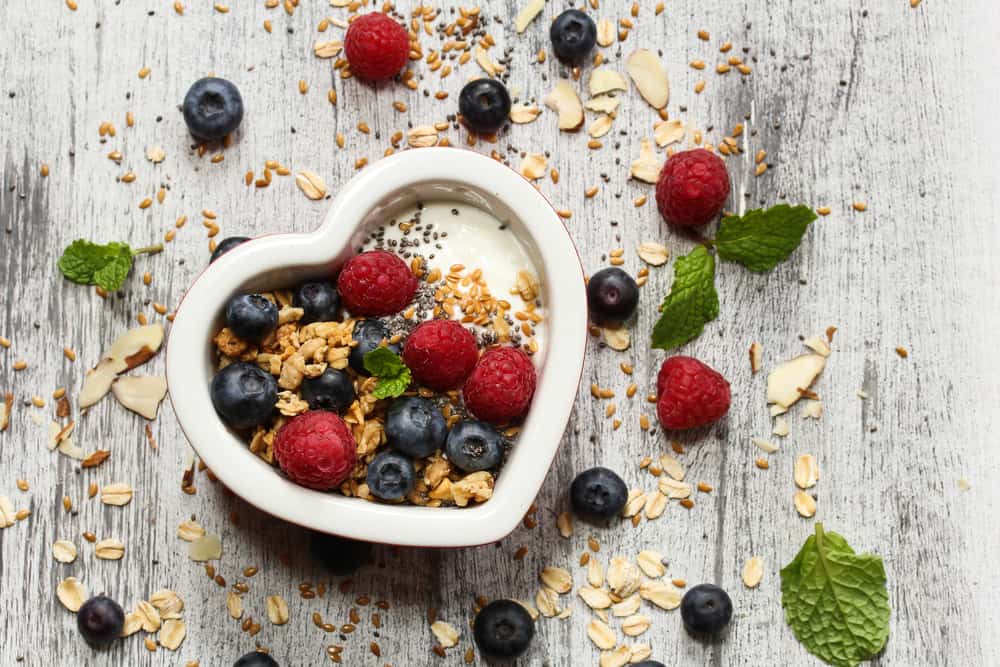Share this post
How a specific strain of Lactobacillus reuteri, NCIMB 30242, supports cardiovascular health
The relationship between increasing levels of LDL-cholesterol (LDL-C) and the risk of coronary artery disease (CAD) has long been established.[1] With CAD on the rise – not to mention the chest pain and heart attacks it can lead to – the importance of eating cleaner, exercising more, quitting smoking, decreasing inflammation, and fighting oxidative stress is on the radar of both integrative and traditional physicians and patients alike. There is likewise no shortage of pharmaceutical prescriptions written for cholesterol-lowering medications – in fact, these are among the most commonly prescribed drugs in America.[2]
What many don’t realize, however – and what scientists have only in recent years begun to unveil – is that the mix of bacteria, viruses, and fungi living in our intestines collectively known as the “microbiome” can exert powerful influence over our cardiovascular health.
How probiotics can help heart health
Given that gut health is so important for our health systemically, could an intervention as simple as taking a probiotic supplement help lower cholesterol levels? Researchers have asked this very question, and their findings suggest that yes, certain probiotics do seem to lower cholesterol levels – in particular the strain Lactobacillus reuteri NCIMB 30242.[3]
In a 2012 randomized, double-blind, placebo-controlled study, 127 participants were randomized to receive either a probiotic supplement containing L. reuteri NCIMB 30242 or placebo capsules daily for nine weeks.[4] At the end of the study, those who took L. reuteri NCIMB 30242 had better cholesterol panels than their counterparts in the control group: L. reuteri NCIMB 30242 reduced LDL-C, non-HDL-C, and apoB – all forms of harmful, or “bad” cholesterol – by 11.64%, 11.30%, and 8.41%, respectively.
Those who took L. reuteri NCIMB 30242 had better cholesterol panels than their counterparts in the control group.
The ratios of “bad” to “good” cholesterol (LDL-C/HDL-C) in the intervention group were also reduced – by 13.39%. Although triglycerides (the form of cholesterol highly influenced by blood sugar levels) were unchanged, high-sensitivity C-reactive protein (hs-CRP), a marker of inflammation, significantly decreased in the L. reuteri NCIMB 30242 group. The blood clot-forming protein fibrinogen also decreased by 14.25% relative to placebo. Similar results were observed in a study examining the effects of a yogurt formulation rich in L. reuteri NCIMB 30242,[5] and subsequent studies have shown both the capsule and yogurt containing L. reuteri NCIMB 30242 to have good safety profiles.[6],[7]
So… how does it work?
The liver / gallbladder / gut bacteria / cholesterol connection
It was first noted in the 1960s that germ-free animals (that is, animals without microorganisms living on them or in them, including their gut) have higher cholesterol levels than their conventionally raised counterparts.[8] The proposed explanation for this was that the intestinal microflora plays a role in the breakdown and elimination of cholesterol.[9]
Specifically, the intestinal microflora helps lower cholesterol levels by its interplay with the gallbladder, an unsung hero of digestion. The main function of the gallbladder is to eject bile (produced by the liver) into the intestine in order to break down fats. Similar to how soap and water wash olive oil off your hands much more effectively than water alone, bile salts act like soap, breaking down fats and oils in the digestive tract.
After the released bile acids finish up their fat-digesting work in the intestine, the bacteria found within a healthy intestinal microbiome help the “used up” bile acids to pass out of the body in the stool in a process known as “deconjugation.”[10]
Once the deconjugated bile acids have passed out the body, the liver uses cholesterol in the bloodstream to make new bile acids. In fact, the conversion of cholesterol to bile acids in the liver – and the subsequent fecal excretion of those bile acids – is a major route of cholesterol elimination.[11] And L. reuteri NCIMB 30242 may be a powerhouse of a probiotic that supports that very process.[12]
The conversion of cholesterol to bile acids in the liver – and the subsequent fecal excretion of those bile acids – is a major route of cholesterol elimination. L. reuteri NCIMB 30242 may be a powerhouse of a probiotic that supports that very process.
Germ-free animals have higher levels of bile acids in their intestines, yet have significantly lower levels of it in their stool, implying that those bile acids don’t get as efficiently eliminated.[13],[14] Furthermore, mice treated with antibiotics have been observed to have 70% less fecal output of bile acids – even after just three days of treatment![15] (Read more about how to bounce back after antibiotic use here.) Decreased elimination of bile acids can create negative consequences when it comes to cholesterol levels and heart health, but thankfully probiotic supplements, particularly those containing L. reuteri NCIMB 30242, may help undo this damage.[16]
In addition to improving general gastrointestinal health[17] and promoting the deconjugation of bile salts,[18],[19] L. reuteri NCIMB 30242 may further enhance cardiovascular health and reduce the risk of heart disease by increasing vitamin D levels.[20]
When it comes to cardiovascular health, the gut might just be the “heart” of the matter.
Click here to see References
[1] Muldoon MF, et al. Lowering cholesterol concentrations and mortality – a quantitative review of primary prevention trials. BMJ. 1990;301:309-14. [2] Bean M. 10 most popular prescription drugs for 2017 [Internet]. Chicago (IL): Becker’s Hospital Review Online; 2017 [cited 2018 Sep 10]. Available from: https://www.beckershospitalreview.com/supply-chain/10-most-popular-prescription-drugs-for-2017.html [3] Ganopolsky JG, et al. Probiotic Lactobacillus reuteri NCIMB 30242 reduces cholesterol and heart disease risk factors. Agro Food Industry Hi Tech. 2013;24(2):14. [4] Jones ML, et al. Cholesterol lowering and inhibition of sterol absorption by Lactobacillus reuteri NCIMB 30242: a randomized controlled trial. Euro J Clin Nutr. 2012;66(11):1234-41. [5] Jones ML, et al. Cholesterol-lowering efficacy of a microencapsulated bile salt hydrolase-active Lactobacillus reuteri NCIMB 30242 yogurt formulation in hypercholesterolemic adults. Br J Nutr. 2012;107(10):1505-13. [6] Jones ML, et al. Evaluation of clinical safety and tolerance of a Lactobacillus reuteri NCIMB 30242 supplement capsule: a randomized control trial. Regul Toxicol Pharmacol. 2012;63(2):313-20. [7] Jones ML, et al. Evaluation of safety and tolerance of microencapsulated Lactobacillus reuteri NCIMB 30242 in a yogurt formulation: a randomized, placebo-controlled, double-blind study. Food Chem Toxicol. 2012;50(6):2216-23. [8] Kellogg TF, Wostmann BS. The response of germfree rats to dietary cholesterol. Adv Exp Med Biol. 1969;3:293. [9] DiRienzo DB. Effect of probiotics on biomarkers of cardiovascular disease: implications for heart-healthy diets. Nutr Rev. 2014;72(1):18-29. [10] Wostmann BS, et al. Catabolism and elimination of cholesterol in germfree rats. J Lipid Res. 1966;7:77-82. [11] De Smet I, et al. Cholesterol lowering in pigs through enhanced bacterial bile salt hydrolase activity. Br J Nutr. 1998;79:185-94. [12] De Smet I, et al. In vitro study of bile salt hydrolase (BSH) activity of BSH isogenic Lactobacillus plantarum 80 strains and estimation of cholesterol lowering through enhanced BSH activity. Microb Ecol Health Dis. 1994:7:315-29. [13] Kellogg TF, Wostmann BS. Fecal neutral steroids and bile acids from germfree rats. J Lipid Res. 1969;10:495-503. [14] Wostmann BS. Intestinal bile acids and cholesterol absorption in the germfree rat. J Nutr. 1973;103:982-90. [15] Kumar M, et al. Cholesterol-lowering probiotics as potential biotherapeutics for metabolic diseases. Exp Diabetes Res. 2012;2012:902-17. [16] Jones ML, et al. Cholesterol lowering with bile salt hydrolase-active probiotic bacteria, mechanism of action, clinical evidence, and future direction for heart health applications. Exp Opin Biol Ther. 2013;13(5):631-42. [17] Jones ML, et al. Improvement of gastrointestinal health status in subjects consuming Lactobacillus reuteri NCIMB 30242: a post-hoc analysis of a randomized controlled trial. Expert Opin Biol Ther. 2013;13(12):1643-51. [18] Martoni CJ, et al. Changes in bile acids, FGF-19 and sterol absorption in response to bile salt hydrolase active L. reuteri NCIMB 30242. Gut Microbes. 2015;6(1):57-65. [19] Jones ML, et al. The human microbiome and bile acid metabolism: dysbiosis, dysmetabolism, disease and intervention. Expert Opin Biol Ther. 2014;14(4):467-82. [20] Jones ML, et al. Oral supplementation with probiotic L. reuteri NCIMB 30242 increases mean circulating 25-hydroxyvitamin D: a post hoc analysis of a randomized controlled trial. J Clin Endocrinol Metab. 2013;98(7):2944-51.
The information provided is for educational purposes only. Consult your physician or healthcare provider if you have specific questions before instituting any changes in your daily lifestyle including changes in diet, exercise, and supplement use.
Share this post
Dr. Erica Zelfand
Related posts
Vitamin C – Not Just for Pirates
Ascorbic acid for bones, joints, and connective tissue An all macaroni-and-cheese diet? What could possibly go wrong? When I was in University, two students made a friendly wager to see who could go the longest subsisting on a diet of macaroni-and-cheese. The competition came to a screeching halt when one of the boys (the…
You Are What You Eat
Delving into the nutritional differences of food sourcing On a daily basis, we are challenged to make decisions about the foods we eat. Not only are we challenged by the food choice itself (salmon burger or beef? fruit or vegetable?) but we also are continuously faced with countless options on the shelves of the…
Glandulars: A Key Therapy in Resolving Fatigue?
Restorative therapies from the animal kingdom for advanced thyroid and adrenal support The many causes of fatigue There’s usually no one “magic bullet” cure for fatigue. This is likely because there is usually no one consistent cause. Fatigue can arise from disrupted sleep patterns, infections, blood sugar imbalances, nutritional deficiencies, allergies, or air pollution….
Are You Nitric Oxide Deficient? Part 1 of 2
Dr. Nathan Bryan, Ph.D., on common etiologies of inadequate nitric oxide production, and the problems it causes Biography: Nathan S. Bryan, Ph.D., is an international leader in molecular medicine and nitric oxide biochemistry. Specifically, Dr. Bryan was the first to describe nitrite and nitrate as indispensable nutrients required for optimal cardiovascular health. He was…
What is Bowel Tolerance?
A guide to dosing vitamin C, magnesium, and other nutrients We often talk about taking vitamin C and magnesium to “bowel tolerance” – but what does that mean? Dosing a supplement to bowel tolerance means taking the highest dose of that supplement possible without causing loose, watery stools (diarrhea).[1] If you’re taking vitamin C…
The Fat-Soluble Vitamins: A, D, E and K
Nutrients for strong bones and a healthy heart Vitamins are classified into two groups: fat-soluble (vitamins A, D, E, and K) and water-soluble (B-complex vitamins and vitamin C). Fat-soluble vitamins are absorbed best when consumed with higher-fat foods.[1] Fatty fish, vegetable oils, green vegetables, and nuts and seeds are good sources of vitamins A,…
Categories
- Botanicals (56)
- GI Health (53)
- Healthy Aging (121)
- Immune Support (39)
- In The News (39)
- Kids Health (21)
- Stress and Relaxation (50)
- Uncategorized (1)
- Video (9)
- Vitamins & Minerals (51)




